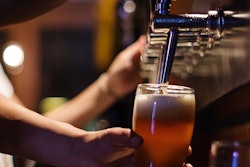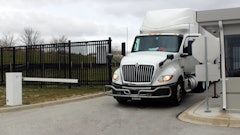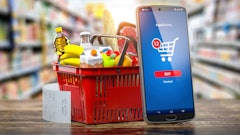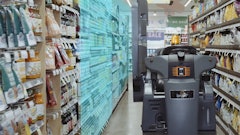Grocery and restaurant chains build their reputations on the ability to consistently deliver fresh, premium quality foods that consumers demand. In recent years, a new food-related phenomenon has emerged: The prevalence of made-to-order food offerings is permeating every corner of the retail market.
This “food everywhere” trend brings with it some key operational considerations. Participating retailers must have the infrastructure in place to preserve food quality—lest they face the consequences of a tarnished reputation and associated regulatory complications.
The increasing utilization of technology is helping retailers address multiple challenges in order to meet these objectives. New electronic facility supervisory systems offer an Internet of Things (IoT) approach to everything from automated temperature monitoring to controls that ensure comfortable store environments.
Grocery and restaurant chains build their reputations on the ability to consistently deliver fresh, premium quality foods that consumers demand. In recent years, a new food-related phenomenon has emerged: The prevalence of made-to-order food offerings is permeating every corner of the retail market.
This “food everywhere” trend brings with it some key operational considerations. Participating retailers must have the infrastructure in place to preserve food quality—lest they face the consequences of a tarnished reputation and associated regulatory complications.
The increasing utilization of technology is helping retailers address multiple challenges in order to meet these objectives. New electronic facility supervisory systems offer an Internet of Things (IoT) approach to everything from automated temperature monitoring to controls that ensure comfortable store environments.
With consumer preferences driving the “food everywhere” trend throughout retail, here is a look at some key considerations for operators.
Food Safety
Ensuring food safety has always been about meeting regulations and achieving compliance with local food codes, but now more than ever it’s essential to preserving the consumer experience.
Many retailers are relying on technology to automate processes and the systems responsible for monitoring, managing, recording and reporting on food conditions throughout cold chain transportation and storage.
These technologies are designed to offer connected solutions that automate the capture, collection and validation of temperature-related information at every stage of the cold chain journey—from the supplier to the ultimate points of sale. Using hand-held thermometers, advanced sensors, and automated temperature monitoring and management systems, retailers are working to make the necessary investments to ensure food safety and deliver more consistent hot and cold food-holding temperatures.
Improving the Customer Experience
It’s important for retailers to create inviting, comfortable and safe environments for consumers to interact with their brands—and deliver on each factor in this equation consistently.
More than ever, retailers are turning to the next generation of facility management and building automation systems to help ensure the reliable performance of coolers, freezers, HVAC and lighting services. Through advanced electronic controls, these supervisory systems help retailers optimize in-store environments and improve the consumer experience in a variety of ways:
- Lighting that highlights featured areas of a facility
- HVAC automation that provides enhanced comfort by making cold aisles or hot food-preparation areas more pleasant
- Automated environmental controls that create ideal dining areas.
These technologies are also helping retailers address their sustainability goals by improving energy efficiencies, reclaiming heat for reuse, and recycling and/or waste stream reduction.
Regardless of the food retail format, not being able to get a specific item due to mechanical equipment failure is very frustrating from a consumer perspective. By allowing equipment downtime to interrupt the delivery of consumer items, retailers could not only lose sales, but potentially face losing customers permanently.
Facility and equipment monitoring technologies provide the connectivity needed to help assure an “always available” environment that helps provide positive consumer experiences to keep them coming back.
Technology to Enable “Food Everywhere”
An important part of meeting the demand for “food everywhere” potentially requires fail-safe food preservation strategies. Retail operators and their suppliers should manage temperatures and ensure food quality along every step of food’s journey to consumers.
To appeal to the growing “foodie” culture and capitalize on this trend, retailers and their suppliers may require specific tools throughout the cold chain and in their retail outlets. Temperature monitoring and facility management technologies will become increasingly imperative to help them ensure food quality and create the consistent dining experiences that today’s consumers demand.





















